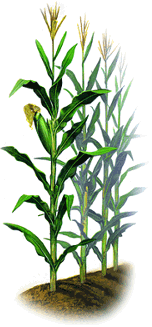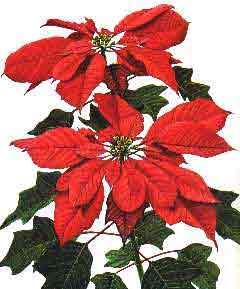http:// www.uky.edu/Agriculture/kpn/kyblue/kyblue.htm

Based on information provided to the Plant Disease Diagnostic Laboratories at the University of Kentucky during diagnostic activities, continuous planting of tobacco in the same field is associated with most Kentucky tobacco farms experiencing serious losses from infectious root diseases. Ironically, rotation is the single most valuable disease control tool available for reducing losses from diseases where the pathogen persists in the soil and attacks the root and stem - such as for black shank, black root rot, mycorrhizal stunt, and nematodes.
Unfortunately, rotation options are not available to many tobacco farmers, and many more cannot use it as often as needed. Consequently, losses from root diseases are high.
The reasons vary widely as to why rotation is not available or used more in Kentucky, but in many cases it relates to decisions in which too much value was placed on other controls. Be aware that commercial advertisements are made to help point out the merits of chemicals and certain varieties being sold to the farmer. However, are you aware of any ads that praise the merits of crop rotation? No company will be advertising their product to point out the weakness of their product. Nevertheless, tobacco growers need to appreciate that varieties and chemicals, though valuable tools in disease control, have weakness too. They are not adequate substitutes for rotation.
Please understand that successive planting of resistant tobacco varieties in the same field year after year still allows the pathogen population to build to high levels and to become more adaptive to the varieties and chemicals being used. In contrast, when tobacco and other host plants of the pathogen are removed from the field during rotation, the pathogen population drops and becomes less able to cause losses.
Therefore, I urge growers to carefully consider the consequences associated with rotation decisions in your operation. Are growers really better-off by just putting out additional acreage to cover for lower yields? Or, by that decision/action, have they just lowered the yield potential of the farm by another 300-1000 lbs/A, and added to their need to use more costly chemicals in the future?
Our findings over many years of research and demonstrations plots have demonstrated the high value of long-term rotations in controlling root diseases of tobacco. That same work has also shown that short rotations of one or two years, though not ideal, can be very helpful in sustaining yields, especially when coupled with resistant varieties and fungicides/fumigants. The main take-home message is: The longer the rotation the more beneficial it will be at reducing pathogen populations. But even short term rotations are far superior to continuous tobacco, especially when matched with appropriate resistant varieties, and chemical controls.
![]() For current blue mold information, go to the Ky Blue Mold Warning System at:
For current blue mold information, go to the Ky Blue Mold Warning System at:
http://
www.uky.edu/Agriculture/kpn/kyblue/kyblue.htm

It appears that our aphid / BYDV situation is very similar to the previous production year. The aphid numbers are quite low and they are arriving late, probably because of the severe drought we have been experiencing. But they are here.
What does that mean for us? First, it makes a control decision more difficult. Populations will be scattered and hard to detect. The weather is certainly no help. As long as it stays warm aphids will continue to fly, flit, crawl and reproduce. If you have aphids in the field, the weather will only make them worse. If you do not have aphids in the field, then the weather makes no difference. In 1998-99 season I had tests with no BYD and some BYD and saw fields with lots of BYD.
To make matters even more difficult, the price of wheat makes the likelihood of paying for an insecticide application, and especially two or more applications, very small.
In the end all you can do is scout the crop. If you find enough aphids to exceed the threshold, then make the application. If you can not, then do not make the application. But remember the simple fact that seeing BYD symptoms in the crop does NOT mean that you have a significant enough loss to pay for a spray. Net return will not pay for the reduction of symptoms, only the protection of yield.
No matter what you decide to do you, will have to continue scouting the crop until the weather turns cold.

It is hard to imagine a hotter issue facing producers. For many corn producers in Kentucky, they may have already answered the question. Grain prices are low and are likely to remain there for the near future, so growers must be careful and manage input costs wisely in 2000. But for those that are still on the Bt- corn fence, there are several pieces of information you will need to answer the question. First, what is the GMO discount (aka. non-GMO premium) that you are likely to receive at your elevator? The next piece of information is, what has been your yield advantage when using Bt-corn in the past? In order for it to be favorable to use Bt-corn for your farm, or a portion of your corn acreage, then the value of the yield advantage needs to be greater than the sum of the GMO discount and the premium charged for the seed. This will not be a problem with producers that feed out their grain.
Let's look at some examples: (1) Suppose the last two years you averaged a 10 bushel advantage using Bt corn on your farm with a 150 bu/acre average. The Bt corn that you like costs an extra $25 per unit and you expect that the price of grain will average $2.40 for non-GMO grain and $2.32 for GMO grain at your elevator.
The cost of using the non-GMO grain will be the yield loss that you expect. The loss is 10 bushels per acre at $2.40 per bushel. That is $24.00 per acre.
The cost of the Bt-corn is the added cost of the seed (adjusted to a per acre value) plus the GMO discount you expect to receive (if any, as many elevators may not have one). The cost is an extrta $8.00 per acre for the seed, $0.08 times the expected 150 bu per acre yield. The cost of the BT-corn is $20.00 per acre.
To compare the Bt corn with non-Bt corn we compare their costs. With this example, using the GMO seed would be more economical, even if you receive a discount!
(2) Suppose the last two years you averaged only 5 bushel advantage using Bt corn on your farm with a 150 bu/acre average. The Bt corn that you like costs an extra $25 per unit and you expect that the price of grain will average $2.40 for non-GMO grain and $2.32 for GMO grain at your elevator.
The cost of using the non-GMO grain is less than the first example. The loss is 5 bushels per acre at $2.40 per bushel. That is only $12.00 per acre.
The cost of the Bt corn is the same as in the first example, $20.00 per acre. In this example, it is more than the cost of not using Bt-corn. So in this example, it would pay to not plant Bt corn, even though you loose 5 bushels per acre to corn borers!
So, in order to make an informed decision whether or not to plant Bt corn next year, you need to have an estimate of past corn borer yield loss, the premium/discount at the elevator, expected price for the grain, and the premium for the Bt corn seed. If producers decide that Bt corn may be profitable for them, they should identify in which fields the benefit will be greatest. Generally, later plantings are more likely to suffer greater corn borer losses and should the greatest benefit of Bt corn.


Plant diseases caused by phytoplasmas are usually damaging to plant health, causing stunting, yellowing, or proliferation of shoots. Examples include aster yellows, lethal yellowing of palm, elm yellows and ash yellows diseases, all caused by phytoplasmas. Recent discoveries of a phytoplasma found in poinsettia suggest that not all infectious phytoplasmas are necessarily bad.
The relatively compact potted poinsettia with multiple flowers that is so admired during the holidays is stunted and has increased shoot proliferation because it is systemically infected with a phytoplasma. Such phytoplasmas can be detected using molecular techniques to detect nucleic acids from the pathogen and they can be observed in the plant with an electron microscope. Plant pathologists from the USDA in Beltsville Maryland and Ball FloraPlant Company in West Chicago, Illinois have been able to produce "healthy" poinsettias free of the pathogenic phytoplasma. But when the disease agent is removed, the plants no longer branch freely and they grow taller. Thus, a "healthy" poinsettia is a more spindly plant with fewer flowers.
Poinsettia cultivars have been selected at least since the 1920's for the desirable traits of low growth habit and multiple branching for multiple flowers. Plant pathologists had long suspected that these desirable selections were infected with something because when poinsettias were subjected to heat treatment or meristem tip cultures, standard techniques to rid plants of systemic infections, the treated poinsettias reverted to a taller, less branched, and therefore less desirable type.
The poinsettia, a tropical plant indigenous to Central America was introduced into the United States in 1825 by J. R. Poinsette who was the U.S. Ambassador to Mexico at the time. In the wild, the poinsettia grows to the height of a small tree. Over the years, nurserymen and breeders have made cultivars that were suitable for growing in pots during the holiday season. But it has only been in this century that good compact, multiple bloom types were available. Of course, these were the poinsettias infected with the phytoplasma. Who would have thought that a plant disease agent would improve this important greenhouse crop? It turns out that the phytoplasma is beneficial to growers, generating multi-flowered holiday showpieces and over $300 million in revenues annually.
This finding again raises the question of whether or not infection of a plant by a microbe should necessarily be called a disease. We do know that infection of grasses by endophyte fungi or legumes by nodule-forming bacteria are beneficial to their hosts. But is infection of poinsettia by a phytoplasma beneficial to the plant, or only to the industry and consumers? We don't yet know whether or not the infected poinsettias themselves are benefitting from, or being harmed by the microbe. Thus, the phytoplasma infection that leads to more marketable poinsettias may or may not be called a plant disease.
More information on this topic is available from the American Phytopathological Society at http://www.scisoc.org/feature/poinsettia/Top.html

 Just when you thought you heard the last about the
pestiferous effects of ladybugs in buildings,
a new report suggests they may also trigger
allergies and asthma in people. The finding was
made public by a Louisville allergist, Dr. Hobert
Pence, and was reported last week by the national
news service.
Just when you thought you heard the last about the
pestiferous effects of ladybugs in buildings,
a new report suggests they may also trigger
allergies and asthma in people. The finding was
made public by a Louisville allergist, Dr. Hobert
Pence, and was reported last week by the national
news service.
The clinical case study involved a southern Indiana man whose house was overrun with the Asian lady beetle, Harmonia axyridis. The beetle has the annoying habit of entering buildings in the fall in search of overwintering sites. Pence's findings, presented at the American College of Allergy, Asthma & Immunology annual meeting, indicated that the man "clearly had high levels of allergic antibody in his in his blood to ladybug proteins." Moreover, he had not suffered from asthma until his house was infested with thousands of ladybugs. His asthma was severe enough to be treated twice daily with medications.
While this may be one of the first apparent cases of ladybug-induced asthma, two cases of nasal allergies triggered by ladybugs were reported in Georgia earlier this year. Last winter, I received word from a pest control operator in Missouri that one of their customers had also been diagnosed with ladybug-induced asthma by his allergist.
It's hard to say how common such reactions will be in the future; Dr. Pence predicted they will be more common. I'm inclined to agree, especially if it turns out that symptoms can be brought on by previous accumulations of dead lady beetles in wall voids, light fixtures, ducts, and other areas of the house. (Such reactions are already well-documented for house dust mites and cockroaches.)
This column is not meant to cause alarm, but to bring our readers up-to-date with recent, preliminary findings. Conservative sharing of such information with clients may be in order until more is known about the true health risks of lady beetle- induced allergy. Customers who have general questions about ladybugs in their homes should be referred to ENT-64: Asian Lady Beetle Infestation of Structures.

Kentucky beekeepers have received an EPA Section 18 Emergency Exemption for the pesticide CheckMite+ (coumaphos) for the control of varroa mites. The varroa mites are parasites of honeybee larvae and adults, causing young bees to suffer deformities or to die. The emergency exemption was granted due to confirmed cases of varroa mite resistance to Apistan (fluvalinate). CheckMite+ is also effective against the small hive beetle, another pest which could invade Kentucky beehives. This shiny, black, quarter-inch-long beetle has devastated hives in Florida and coastal Georgia for two years, and has been sighted in Ohio and other states. CheckMite+ is manufactured by Bayer Corporation and is available from Mann Lake Ltd., a beekeeping supply company. Beekeepers may call Mann Lake at 800-233-6663 for pricing and purchase information. Beekeepers should be advised that while resistance to Apistan has been confirmed in Kentucky, it should still be effective for many beekeepers. Hives need to be monitored for Apistan effectiveness and should only use CheckMite+ if resistance is noted. Beekeepers are cautioned that the use of CheckMite+, like Apistan, is only allowed when honey supers are not on their hives and bees are not gathering nectar that will be converted to honey for human consumption. (State Apiarist, Kentucky Dept. of Agr., Nov. 8, 1999)
Friendly Systems Inc. of Irving, Texas was sentenced on October 27 for its July conviction on violating the Federal Insecticide, Fungicide and Rodenticide Act (FIFRA). Friendly was fined $450,000, which will be suspended if the company pays $150,000 into a special fund to be used for the health care needs of Sioux Indian children on the Rosebud Indian Reservation. Friendly illegally sold the pesticides Tisan and DDS-164 to tribal programs for sanitizing children's toothbrushes, a use that is inconsistent with their labels. These pesticides are registered and labeled for the purpose of sanitizing floors and silverware. Many of the approximately 100 children exposed to the pesticide by brushing their teeth with toothbrushes dipped in pesticide developed medical problems, including blisters and burns in their mouths. (EPA, Nov. 4, 1999)
The EPA is making available for public and expert comment a preliminary risk assessment for the widely used insecticide chlorpyrifos (Dursban, Lorsban). This preliminary risk assessment indicated that risks from the use of chlorpyrifos in residential settings, as well as its risks to applicators and nontarget wildlife, are of concern. As EPA moves to final action on chlorpyrifos, which is scheduled for next summer, it will work with manufacturers and stakeholders to address those risks. Release of this risk assessment is an initial step in reviewing this pesticide. Chlorpyrifos is one of the most widely used pesticides in the U.S., with an estimated 20 to 24 million pounds applied annually. It is used on food crops, in termite control and in various home and garden products. The public will have 60 days to comment on this risk assessment. EPA will then review all comments, publish a revised risk assessment and solicit risk management proposals. Copies of the risk assessment are available on EPA's website at: http://www.epa.gov/pesticides/op/status.htm or from the Pesticide Docket: telephone 703-305-5805. Comments must be received by December 27, 1999, identified by Docket Number OPP-34203. (OPP, EPA, Nov. 2, 1999)
In October, EPA introduced a website for their Endocrine Disruptor Screening Program (EDSP). The web address is: http://www.epa.gov/scipoly/oscpendo/index.htm . In recent years, some scientists have proposed that chemicals in the environment might be disrupting the endocrine system (glands and hormones) of humans and wildlife. The endocrine system regulates a wide range of biological processes, such as control of blood sugar, and growth and function of the reproductive system. The EDSP focuses on providing methods and procedures to detect and characterize endocrine activity of pesticides, commercial chemicals, and environmental contaminants. (EPA, OPP, Oct. 18, 1999)

Recent samples sent to the Diagnostic lab have
included rust-infected alfalfa; ear rot of corn caused
by Fusarium moniliforme; black rot, sooty blotch
and flyspeck on apple; powdery mildew on
greenhouse strawberry; Rhizoctonia root rot on
aster and poinsettia; Pythium root rot on poinsettia
and turfgrass; Rhizosphaera needlecast on spruce;
drought stress on many landscape plants, especially
conifers; growth cracks and russetting of fruit on
greenhouse tomatoes (caused by adverse
environmental conditions); powdery mildew on
kale, mustard and turnip; and scab on turnip.
Details are posted on the Pesticide Applicator Training Web Site
http://www.uky.edu/Agriculture/PAT/welcome.htm
Lee Townsend
Extension Entomologist